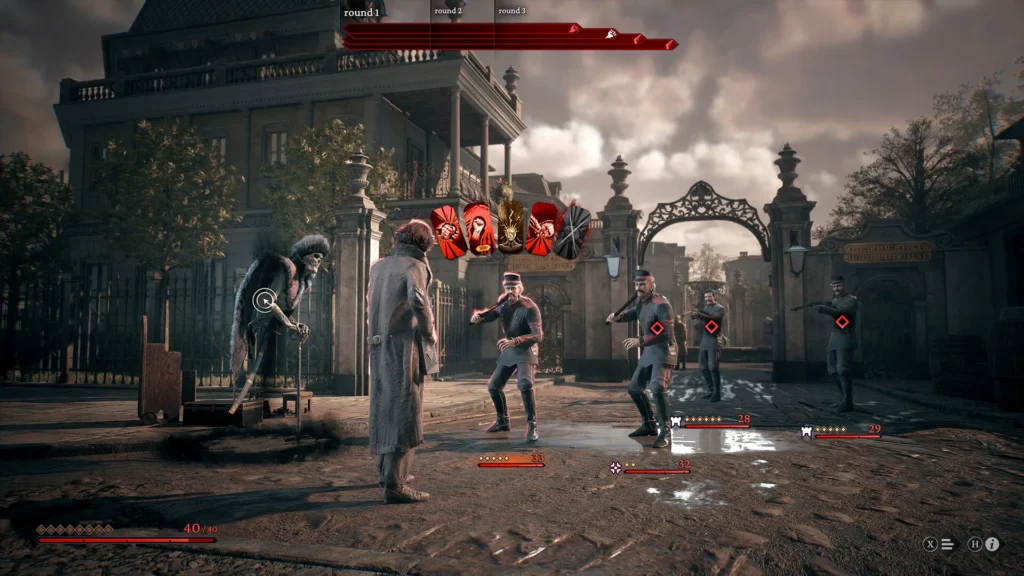From Polish studio Fool’s Theory, The Thaumaturge released last March, bringing a distinct flavor of world and character building to videogames in the form of an isometric RPG with some very unique elements. It now arrives on consoles, giving players a new way to enjoy what is certainly 2024’s biggest surprise.
The Thaumaturge takes place in early 20th century Eastern Europe, more importantly Poland, a country divided by politics, religion, and the threat of Tsar-ruled Russia, a decade before its revolution. In the role of Wiktor Szulski, a magician of sorts better referred to as a thaumaturge, someone who is looking for the means to rebuild his mind after a horrifically tragic event, you are forced to travel back to your hometown of Warsaw to bury your recently deceased and estranged father.
While that might seem like a pretty commonplace work of literature, it makes for both a gripping setup for a game and a setting that wouldn’t ever be considered if the developers weren’t Polish themselves. In the game, as Wiktor, you work to help settle conflicts provoked by people’s flaws, which in turn feed ghastly creatures called salutors. These are powerful entities that can eventually become an ally to our protagonist, making him decidedly more powerful, at the cost of his mental and physical wellbeing.
That’s because each time Wiktor signs a truce with these guys, he assumes the flaws that they consume, allowing him to put them to use during conversations, runabouts through the game’s incredibly dense and story-rich world, as well as, you guessed it: combat. Then again, as a counterpoint, every time that takes place, Mr. Szulski’s fragile mind becomes ever more conflicted, and it’s there that his friend Rasputin comes in. Yes, THAT Rasputin, who becomes the main character’s travelling buddy after meeting and temporarily saving him from his sickness at a village in what’s now Georgia, at the beginning of the game.

It’s hard to talk about The Thaumaturge without addressing the elephant in the room – what exactly makes it something that can be played and not just an interesting book you could be reading. Well, much like The Witcher, which began its life as one of those and turned out to be a global phenomenon as a videogame, this tries and succeeds at having you be part of the overall narrative in smart ways, all the while keeping the trappings of what makes a game tick.
The latter is summed up by its battle scenes, which take a note from Darkest Dungeon and its ilk by having Wiktor take on enemies in turn-based state-inducing combat, where you are required to break down your foes mental defences before kicking their physical health down effectively. That’s done via attacks where the thaumaturge teams up with his salutors, via a handful of options in his ever-growing deck that gets bigger as the story progresses. It’s functional, sure, but it can be considered the game’s one blemish in its nearly spotless execution, since encounters tend to boil down to going through mostly the similar motions every single time.
But it’s in the way that the role-playing works that The Thaumaturge truly shines. Thanks to his powers which give him an in-depth vision of the minds of the people that surround him, Wiktor is able to piece together conclusions and use them to work the situation to whatever result he deems useful. Be it at the very start of his journey, where by examining a stagecoach driver’s possession, he’s able to coax the overworked and exhausted man to give him a ride, or trying to defuse a particularly tricky situation during one of his stops, looking over each clue and getting the choice to influence the outcome.

Unlike your usual morality system in RPGs like Mass Effect, things aren’t always black and white here, and depending on your choices, the consequences can come knocking at your door down the line, as well as work to make Szulski even more sick, and, at the same time, bump up a stat or two. It’s a cleverly designed and balanced system that Fool’s Theory has going in The Thaumaturge, keeping you constantly on your toes, in a very good way. It’s not overbearing, but it pressures you to live with your choices; whether they end up going your way or not, the story will always keep going.
On consoles, PlayStation 5 especially, The Thaumaturge runs and looks fine. There are a few instances of assets popping in during camera shifts, which is often the case during cutscenes, although it’s nothing that gets in the way during gameplay. There are quality and performance toggles available and they do what you’d expect if you are familiar with playing titles on current gen machines. The most important part where most ports usually drop the ball in, the controls, works well, mapping movement to the left analog stick, allowing you to freely run around and explore the map at your leisure. Since combat is static, there’s not much that could’ve been messed up either.
If you’ve yet to enjoy The Thaumaturge and have one of the current consoles to play it on instead of the PC, this port is a great way to go. It doesn’t lose out on anything and gives you an amazing excuse to throw yourself onto a couch and drift away in its lore and characters, easily some of the best when it comes to the RPGs released this year. I personally still have some ways to go in this and am looking forward to doing so during the break. Like an addicting page-turner sitting at my bedside, I’ve got it bookmarked and admittedly eager to get back to it as soon as humanly possible!





